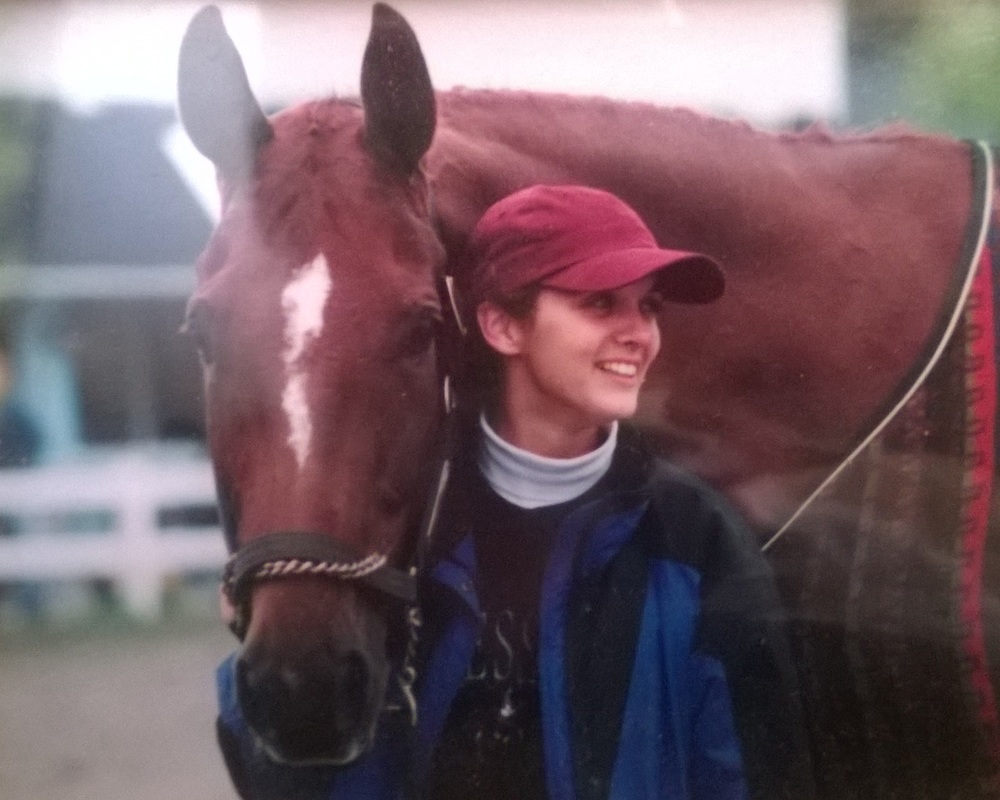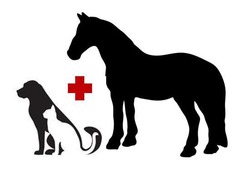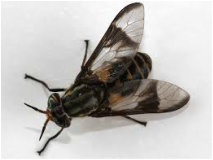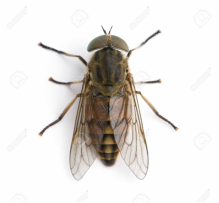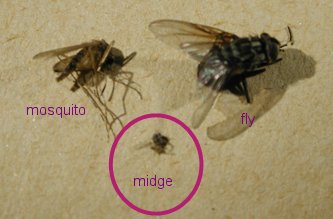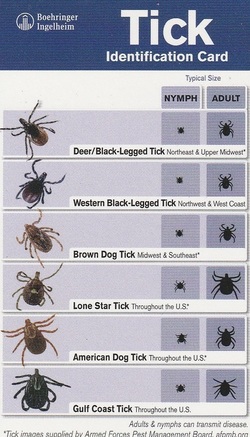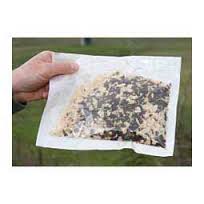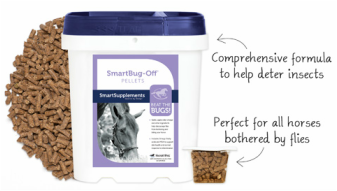by Amy Ortez, DVM
|
|
Equi-Spa™ Not So Sweet Itch Formula Gel
by Mary A. Lainhart
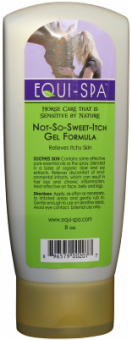
My mustang, Neeheewanna, was rubbing herself raw, literally. Her mane was gone, the dock of her tail was bare and cracked. She rubbed incessantly. I had never had this with any of my other horses or mules. After having the vet come out and taking some skin samples to eliminate causes, the end determination was sweet itch. I was given a prescription shampoo to use on her to relieve her symptoms. It really didn’t seem to help at all. The following year, same thing. This time I was telling my friend about it and she recommend Equi-Spa™ Not So Sweet Itch Gel Formula. She had been using for her horse and swore by it. Now I know why!
The Not So Sweet Itch Gel Formula reduces, if not eliminates, mane and tail rubbing. According to Equi-Spa™, “It soothes and moisturizes the skin and hair of the mane and tail to reduce rubbing due to dry itchy skin and promote new hair growth.” Not So Sweet Itch Formula is a special blend of soothing witch hazel and moisturizing coconut oil blended with pure essential oils in a relieving organic aloe vera gel. These oils also have some properties that help with hair regrowth while moisturizing dry skin and hair. Gentle enough to use on sensitive areas.
Not So Sweet Itch Gel really performs just as Equi-Spa™ claims. It relieved Neehee’s symptoms, the rubbing decreased and her raw, cracked skin healed. As she healed, her hair started to grow back in a noticeable amount of time. The prescription shampoo I tried previously, did not relieve the itching, nor did it heal her skin or promote hair regrowth. I now make sure to have this as a staple in my barn. I never want my horse to experience the pain and discomfort she endured from sweet itch again.
Note: This is not a paid advertisement. This review is based on my own personal use and experience.
The Not So Sweet Itch Gel Formula reduces, if not eliminates, mane and tail rubbing. According to Equi-Spa™, “It soothes and moisturizes the skin and hair of the mane and tail to reduce rubbing due to dry itchy skin and promote new hair growth.” Not So Sweet Itch Formula is a special blend of soothing witch hazel and moisturizing coconut oil blended with pure essential oils in a relieving organic aloe vera gel. These oils also have some properties that help with hair regrowth while moisturizing dry skin and hair. Gentle enough to use on sensitive areas.
Not So Sweet Itch Gel really performs just as Equi-Spa™ claims. It relieved Neehee’s symptoms, the rubbing decreased and her raw, cracked skin healed. As she healed, her hair started to grow back in a noticeable amount of time. The prescription shampoo I tried previously, did not relieve the itching, nor did it heal her skin or promote hair regrowth. I now make sure to have this as a staple in my barn. I never want my horse to experience the pain and discomfort she endured from sweet itch again.
Note: This is not a paid advertisement. This review is based on my own personal use and experience.
NATURAL FLY AND TICK SOLUTIONS
TO ENJOY YOUR SUMMER
By Mary A. Lainhart
I love spending time at the barn or being anywhere with our horses and mules. We spend a majority of our time outdoors with our animals, gardening, hunting, fishing or just enjoying nature. I prefer to spend my time focused on what is going on around me, rather than focusing on the biting insects and pests that seem to plague us from Spring through Fall.
Spalding Fly Predators®
At the barn we have had wonderful success with Spalding Fly Predators®. According to Spalding Labs, “The House Fly (80%) and the Stable Fly (20%) are the primary pest fly species that create problems as well as being the most widely distributed.” Both of these can be very effectively controlled by good sanitation and Fly Predators®. Fly Predators® are the natural enemies of flies, but never bother people or animals. They kill flies before they emerge. Spalding Labs makes using their Fly Predators® seemless. On their website (www.spalding-labs.com), they walk you through a series of questions to determine the optimum number of Fly Predators® for your farm, herd and geography. They ship them monthly based on your climate, so they always arrive at the correct time to disperse them on your property.
At the barn we have had wonderful success with Spalding Fly Predators®. According to Spalding Labs, “The House Fly (80%) and the Stable Fly (20%) are the primary pest fly species that create problems as well as being the most widely distributed.” Both of these can be very effectively controlled by good sanitation and Fly Predators®. Fly Predators® are the natural enemies of flies, but never bother people or animals. They kill flies before they emerge. Spalding Labs makes using their Fly Predators® seemless. On their website (www.spalding-labs.com), they walk you through a series of questions to determine the optimum number of Fly Predators® for your farm, herd and geography. They ship them monthly based on your climate, so they always arrive at the correct time to disperse them on your property.
Feed Supplements
SmartPak (www.smartpakequine.com) offers SmartBug-Off® Pellets, which is one of a variety of supplements available for insect control. In a convenient pelleted form, SmartBug-Off® controls flies and other pests from the inside – out. “This comprehensive formula contains garlic, brewer’s yeast, and apple cider vinegar to help deter biting insects. It also provides Omega 3 fatty acids, antioxidants and MSM to help support a normal inflammatory response and healthy skin. Lastly, SmartBug-Off® includes diatomaceous earth to discourage insect breeding in manure.”
SmartPak (www.smartpakequine.com) offers SmartBug-Off® Pellets, which is one of a variety of supplements available for insect control. In a convenient pelleted form, SmartBug-Off® controls flies and other pests from the inside – out. “This comprehensive formula contains garlic, brewer’s yeast, and apple cider vinegar to help deter biting insects. It also provides Omega 3 fatty acids, antioxidants and MSM to help support a normal inflammatory response and healthy skin. Lastly, SmartBug-Off® includes diatomaceous earth to discourage insect breeding in manure.”
|
Essential Oils - Flies
Essential Oils (reference February Issue for All Essential Oils are NOT Created Equal) are a natural way to repel flies and other bothersome pests. There are a multitude of fly repellent recipes using essential oils that you can find on-line. My opinion is, most are a matter of preference. Some call for apple cider vinegar. I personally do not want to smell like vinegar all day, nor do I want my animals to. My one horse didn’t like the scent of Citronella. While Citronella is an excellent fly repellent, I didn’t want to use something on him that he had an affinity to. That being said, the following is a list of essential oils that work well to repel flies: Basil, Cedarwood, Citronella, Eucalyptus, Geranium, Lavender, Lemon, Lemongrass, Peppermint, Purification, Rosemary, Tea Tree and Thyme. What is the best fly repellent using essential oils? Using essential oils that are proven to repel flies and the one you and your animals like. For flies or ticks, the essential oils can be diluted and used as a spray. Other options for use are:
|
Essential Oils - Ticks
Essential oils can also be used to repel ticks. Some essential oils not only repel insects, they also boost the immune system, contain anti-infectious and anti-viral properties as well. Geranium – has natural insect repellent, antiseptic and anti-inflammatory properties. Gentle enough to use with direct application. Palo Santo – has anti-infectious, anti-viral, immune-stimulant and insect repelling properties. Very effective in removing ticks. Research was done proving that Palo Santo will kill a tick within 15 minutes of application. Compared to Peppermint where the tick was still alive two weeks after application. Rosewood – has antifungal, anti-infectious, and anti-parasitic properties. It is also good for fungal skin conditions. Thyme – has antifungal, anti-infectious, and anti-viral properties. It is one of the best oils for preventing infection and boosting the immune system. Myrrh – has anti-infectious, antiseptic and anti-parasitic properties. Other oils that repel ticks are: Cedarwood, Citronella, Eucalyptus, Juniper, Lavender, Lemongrass and Peppermint. To remove a tick, place 2-3 drops of Palo Santo directly on the tick and wait for the tick to let go. Peppermint, Cinnamon Bark, Thyme or Oregano can also be used, but will not kill the tick. Once the tick is removed, immediately apply anti-infectious, anti-viral and immune stimulating oils such as Thyme, Oregano, Clove, Tea Tree or Thieves. |
Before using essential oils on your animals, you should make sure to read the individual labels of each oil you intend to use. Some essential oils are “hot” oils (February Issue) and may need to be diluted with a carrier oil (February Issue). Other essential oils (like citrus oils) can cause photosensitivity, so caution should be heeded when using them if you or your animals are going to be outside in sunlight. Many essential oils can be used with direct application (March Issue) to help repel pests. Expose your animal to each individual essential oil prior to using it on them (April Issue) to see if they are accepting of it. Natural insect repellent needs to be reapplied frequently for best results.
DISCLAIMER
The information contained on this website is not meant to diagnose, treat, cure, or prevent any disease. Information found on this website
is meant for educational and informational purposes only.
When in doubt, consult your veterinarian.
The information contained on this website is not meant to diagnose, treat, cure, or prevent any disease. Information found on this website
is meant for educational and informational purposes only.
When in doubt, consult your veterinarian.
